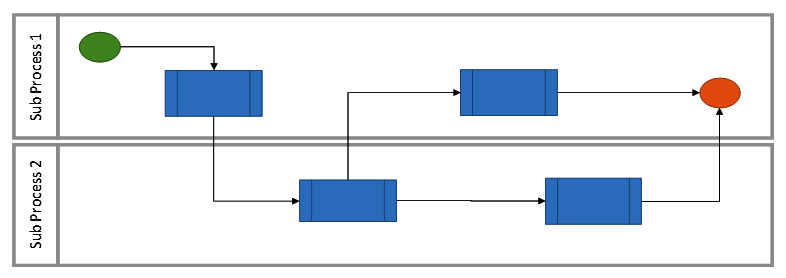A subprocess is a level in a business process for each individual business process function. Detailing business functions starts from this level. One or many connected requirements are needed to be able to perform a particular set of activities.
Subprocesses help in visualizing inter dependencies within a business process and have links to other processes.
Each subprocess must constitute all the grouped functions within it. For example, in order to cash a business process, the following subprocesses should be covered:
- Order intake
- Order processing
- Order release and credit checks
- Product and service sales
- Pricing and term agreements
- Consignments
- Picking, packing, and shipping
- Customer invoicing
- Customer payments
- Intercompany documents
- Returns
Subprocesses are well documented in visual tools such as Microsoft Visio.
The following diagram depicts a sample subprocess with swim lanes showing the involved departments/roles and their inter dependencies:

A subprocess could be dedicated to a single functional area or it could be a cross-functional area as well. Some may go a level deeper than the requirements to the activity level, the decision for which depends on the type, complexity, and nature of the initiative. Essentially, in process-flow documentation, there should be a clear definition and depiction of information flow with inputs, outputs, decision points, and roles involved.
Now, let's deep dive into the requirements.